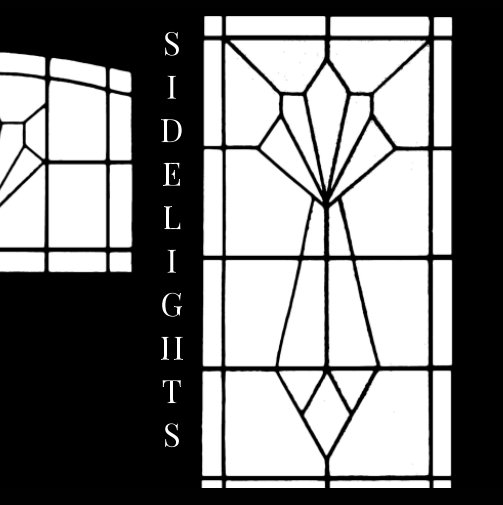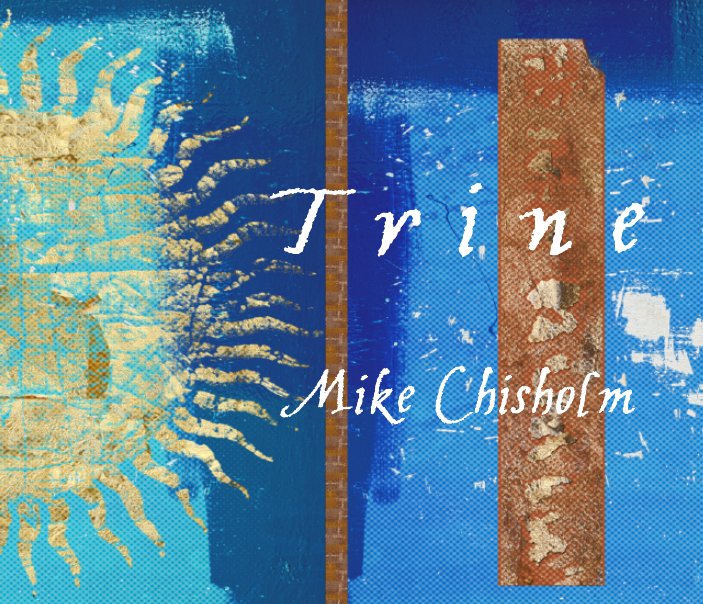Burning Man (original in colour)
If you've ever looked through art books printed in the years before full-colour printing became the default, cheap option, you'll be familiar with the words, "original in colour". Many, if not all of the illustrative plates in those books would be monochrome renderings of famous paintings, which, in the world of black and white newspapers, magazines, and TV, seemed a perfectly normal thing. If you flip through the boxes of old exhibition catalogues and art monographs that you can still find in second-hand bookshops (assuming you can find one of those), it's amazing what a drab and disappointing experience this is. A promising-looking publication on Bonnard or Matisse turns out to be full of grey, slightly soft, poorly-reproduced photographs of paintings, lacking even any of the qualities of good monochrome photography: the caption "original in colour" was not so much explanatory as an apologetic shrug. Go back a hundred years, and what you get instead of photographs, naturally, are engravings of famous paintings. Also in black and white, but at least having the characteristic crisp vigour of line and hatched shade of the cut woodblock or etched plate.
This has everything to do with the available technologies of printing and reproduction, of course [1]. When Walter Benjamin wrote his famous essay "The Work of Art in the Age of Mechanical Reproduction" it was the mid-1930s, and he could only have vaguely intuited how excellent the "mechanical reproduction" of art would become in another 50 years; something it's easy to forget when reading that essay now. As I am sure I must have commented before, for those of us who grew up seeing our art exclusively in full-colour reproduction, the disappointment often turns out to be seeing the original work on a gallery wall. It's not just that a good, book-sized reproduction can be more pleasing than an original wall-sized painting (although I'd maintain that is often the case), but also that – for the suburban, small-town enthusiast without access to a gallery (i.e. most of us) – the experience of "art" is a postcard-sized experience of mediation, almost entirely derived from books, magazines, album covers, TV, and posters. With the result that, yes, I did actually prefer browsing the Tate's superb catalogue of Bonnard's paintings to walking the crowded floors of their recent blockbuster exhibition, trying to get a good look at the door-sized canvases. Quite apart from the relative affordability of the catalogue, I have no idea what I would do with just one of those paintings – where on earth would I put it? – if some wealthy patron were to present me with one [2]. To experience art in its original, unique, unmediated form is to be reminded of its essential exclusivity. Until, that is, the "age of mechanical reproduction".
However, as all admirers of photography know, monochrome, done well, has its own special magic. Again, the century-long domination of "black and white" in photography owes more to available reproductive technology than aesthetic preference, although it is clear that the one seems always to end up driving the other. After all, there's absolutely no reason to persist with obsolete printing techniques like the woodcut, the lithograph, or the screenprint other than the specific qualities of the mark-making they allow, and the cachet these have attracted, once divorced from real-life commercial operations. So, now that all photography has for some time now by default been in colour, the choice of monochrome is a conscious, semi-retro aesthetic choice, made by those who appreciate the qualities of the mark-making it allows, and the cachet it attracts, now that it is divorced from real-life commercial operations. As I say, done well, it has its own special magic. Done badly, of course, it stinks.
Berlin Bird (original in colour)
The thing is, subtract colour from the world, and other, less obvious qualities get a chance to emerge. It's a bit like chairing a meeting, and silencing the dominant, more voluble members, so that the shyer attendees can air their views, and make their own thoughtful, but too often ignored contributions to the debate. Yes, yes, beautiful and eye-catching colours, but what about shape, tone, texture, shadow and light, and their relative weights across the whole picture? All so much easier to see, when colour keeps its big mouth shut.
Now, self-evidently, I do prefer to work in colour. A long time ago in the mid-1980s I did learn to process 35mm and medium-format black and white film, and how to produce a "fine print" in the darkroom, but I never came to love it the way some do. Frankly, I regarded it as a bit of a chore – or rather, an unforgiving chain of chores – but in the resigned way you accept the necessity of changing nappies or doing the washing up. Needs must... Then digital came along. I wrote a post about this way back in June 2009 (Tears in the Stop Bath) which got some attention on TOP at the time, and was probably what brought many of the earliest readers to this blog. In short, the advent of digital photography was a total liberation: no more nappies, no more washing up, no more tears in the stop bath! Clearly, as with colour, monochrome photography has become significantly easier and more "creative" with the digital tools available, but even so I haven't really produced a significant body of monochrome work since White Crow Telescope in 2010. However, for whatever reason, that phrase "original in colour" popped into my mind recently, and the idea of rendering some of my colourful photo-collages into monochrome versions popped up alongside it. If nothing else, it seemed like a nice, appropriated title to hang a project on, along the lines of "Five Leaves Left" [3], or "Unconditionally Guaranteed", and a handy way to
So far, I haven't done much about it, other than to try draining all the colour out a few more or less randomly-selected pictures (there's a special little plug at the bottom – disposing of the used colour is less of an environmental problem than I'd feared). I've been printing them on a range of exotic paper samples I've had hanging around for ages. Of these, I'm quite keen on some thin Japanese kozo papers from Awagami, almost a tissue paper at 42g/m², although they are a bit of a challenge to get right. A large part of the point of monochrome is to enjoy the quality of the tonality. I was taught by the late Mike Skipper, in the classic style, to look for a complete range of tones in a print, from the blackest black to the whitest white, but there are other, more subtle traditions, for example the use of "alternative" processes like platinum/palladium, of which Pradip Malde is a master. These kozo papers push the tones into that warm, luminous spectrum of compressed greys so characteristic of alt processes, something I'm not yet entirely comfortable with. I know I won't want to use conventional photo papers for these pictures, however, so I'll probably end up using some compromise like Epson's own "Watercolor" paper, or Hahnemühle's "German Etching", which combine an attractive texture with the capacity to print a proper deep black.
I think what I'm finding attractive about this is the way turning an existing colour image into a satisfying range of tones – whether from blackest black to whitest white, or some more limited scale of ethereal greys – can cast a unifying filter over everything. Obvious, really, but it does make the whole thing look more coherent, somehow, and less constructed, as if I had sat down and worked the picture up from scratch on a blank canvas. Even though that's precisely what I did do, in the first place! Beyond simple appearances, though, I suppose it's a question of giving the eye a different kind of work to do, and a chance to be more attentive to some quieter, less assertive qualities.
Owl Light (original in colour)
1. If you find this subject as fascinating as I do, I recommend the book The Printed Picture, by Richard Benson (MOMA, 2008).
2. An old friend is in a relationship with a painter who produces medium to large work. It seems each time I visit him yet another wall in another room has vanished beneath some beautiful but rather large painting. At such intimate domestic proximity, a large canvas can feel more like a stage-set "flat" than a picture on the wall.
3. I've explained this before, but younger and overseas readers may not get the significance of Nick Drake's 1969 album title. Once upon a time, the makers of Rizla hand-rolling cigarette papers used to insert a little printed slip of paper that emerged as you got towards the end of the packet: it read "only five leaves left". Towards the middle of the 1970s this was replaced by the more literal instruction "Time to buy another packet". A little bit of poetry had gone from the world. Needless to say, Nick Drake's album title is yet another of those nudging references to Reefer Culture that were so prevalent at the time. Hard to imagine it ever having been called "Time To Buy Another Packet", though...





















